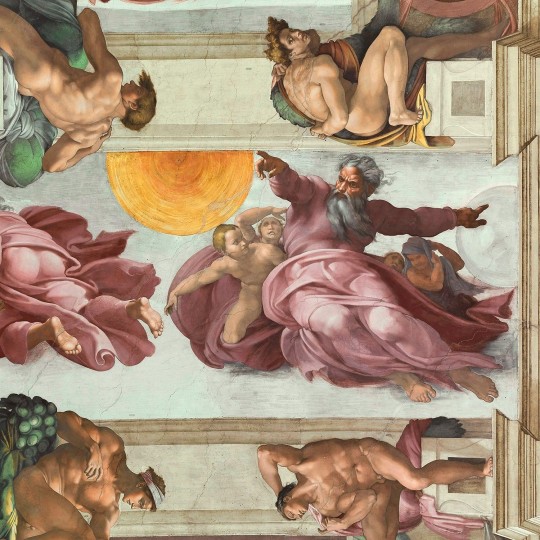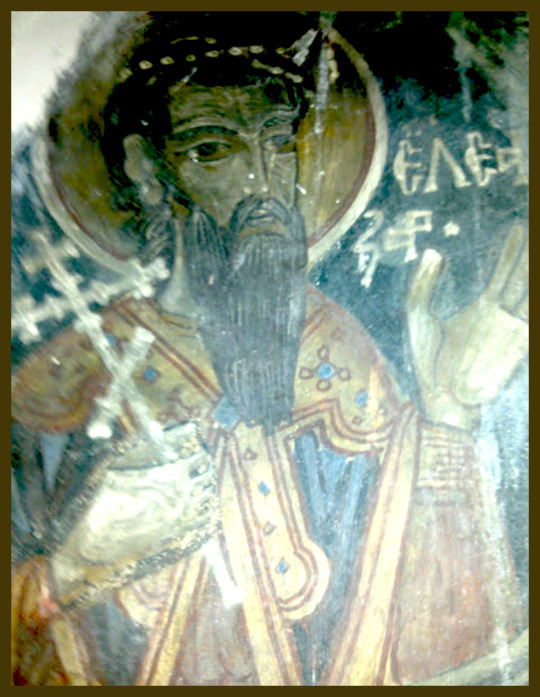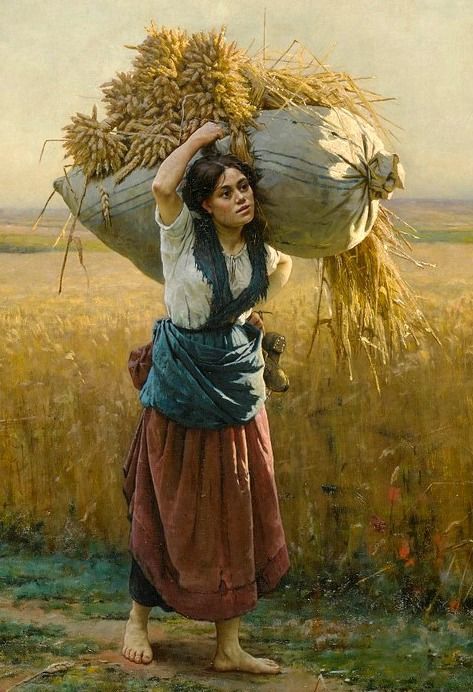#oldTestament
Explore tagged Tumblr posts
Text
Father in heaven, we love and revere you. We recognize that you have the power and authority over all of heaven and earth. You formed the seas, you set the sun in its place, and you gave us life. Please forgive us when we think we have control and help us to surrender that illusion to you. We pray this all in Jesus’ mighty name. Amen.
#bible#biblestudy#devotional#devotion#oldtestament#christian#christianity#walkthroughtheword#godisgood#blog#christianblog#faith#scripture#dailydevotional#dailybible#jesus#jesuschrist#god#holy#blessed#pray#love#prayer#dailyprayer#prayerwarrior#hope#Christian#Christianity#catholic#church
71 notes
·
View notes
Photo

Book of Genesis
The Book of Genesis is the first book of the Jewish scriptures and the Old Testament of the Christian Bible. Genesis takes its name from the opening line in Hebrew – beresit, ("in the beginning") – later translated into Greek as genesis ("origin"). Genesis is the first text of what eventually became designated the Pentateuch, the Jewish Torah ("teachings"): five books of the Laws of Moses.
The Documentary Hypothesis
Genesis consists of a variety of literary details: myth, hymns, prayers, sacrifices, rituals, oracles, folk tales, and historical narratives. Tradition claimed that the first five books were written down by Moses, who passed them to his general Joshua when the Israelites arrived in Canaan from Egypt. In the 19th century, the social science disciplines of archaeology, anthropology, and sociology emerged and were utilized to study ancient civilizations and ancient texts. What is noteworthy in Genesis is that several of the stories are repeated, but with varying details. At times, the God of Israel is referred to as "Lord," but at other times as "God almighty." When this occurs we also find theological differences, as well as indications of changing historical contexts that included politics.
After the period of the united monarchy under King David and his son, Solomon (c. 900 BCE), two separate kingdoms were created: the Northern Kingdom of Israel and the South Kingdom of Judah. A way to explain the formation of the text was proposed by Julius Wellhausen (1844-1918), who taught at the University of Göttingen in Germany, in what became known as the Documentary Hypothesis. As we do not know who actually wrote the biblical texts, the various elements were assigned to a source:
J, the Jahwist, or Jerusalem source The Hebrew name of God (revealed in the book of Exodus) consisted of four consonants, YHWH ("I am that I am"), described as the tetragrammaton. We have the German J, for the pronouncement of the Y sound. The later Masoretic version added vowels, which gives us the English version, Jehovah (which does not appear in the Bible). The J source utilized anthropomorphic portraits of God; "the face of God," "the hand of God." In these texts, God often visits the earth.
E, the Elohim source The E comes from a form of the Canaanite el, pluralized as representing several aspects of the godhead, but also from the tribe of Ephraim, settled in the Northern Kingdom of Israel. The E source portrays God as a more abstract being who does not come to earth, but communicates through angels.
P, the Priestly source The P source is a collective term for priestly concerns. This includes the sacrifices, rituals, hymns, prayers, and the begats of Genesis. The Hebrew begat ("brought forth") was the term for procreation. All ancient cultures emphasized bloodlines in detailed genealogies. This validated concepts and practices handed down through the generations. In oral cultures, the repeated lists of the begats may have been a way to memorize oral traditions.
D, the Deuteronomist source This source was named after the last of the five books assigned to Moses (Deuteronomy). It is a collective term for the final form of the traditions that were written down. In 722 BCE, the Neo-Assyrian Empire invaded the Northern Kingdom, and refugees from the North migrated to Judah. This may be when northern traditions were first joined to southern traditions, combining the J and E sources.
In 587 BCE, the Babylonian Empire invaded Judah and destroyed the Temple of Solomon. At that time, some Jews were taken captive to the city of Babylon. This period is known as the Babylonian exile." The theory is that the "Deuteronomist," either a person or school of scribes, completed the final redaction, or editing, of all the combined sources while in Babylon, beginning c. 600 BCE, but with further editing over the next several centuries (in a range from 538-332 BCE).
Jews Mourning the Exile in Babylon
Eduard Bendemann (CC BY-SA)
Continue reading...
30 notes
·
View notes
Text
Genesis: Let us make man in our image.
First commandment: Have no other gods before me.
Psalms: *talks about Yahweh being in a divine counsel*
Yahweh, El, Baal, Asherah: "Maybe monotheism was the friends we made along the way. Amen."
#yahweh#yahwism#yahwist#asherah#el#baal#isrealites#canaanites#tanakh#bible#oldtestament#religion memes#ancientreligion#memes#occult#occultist#witchcraft#witch
29 notes
·
View notes
Text

Saint Hannah, Mother of Samuel
12 C. BC
Feast Day: December 9
Patronage: Childless and infertile women, and poverty
Saint Hannah is an Old Testament (1st Book of Samuel) wife, whose marriage to Elkanah was barren. Even though Elkanah loved her dearly, he married Peninnah, who bore him many children. Hannah grieved bitterly and prayed fervently in the temple over her misfortune. The priest Eli learned of her story, gave her a blessing and she conceived and bore Samuel. (meaning; Asked from God, or God heard) Samuel served Eli and became one of the greatest of the Judges in the Old Testament.
Prints, plaques & holy cards available for purchase here: (website)
55 notes
·
View notes
Text

Another one of my old maps that I made, Twelve Tribes of Israel according to the Bible
#Israel#biblestudy#BibleHistory#judea#ancient#history#ancienthistory#biblestory#davidandgoliath#oldtestament#biblemap#map#mapmaking#mapping
8 notes
·
View notes
Text
SAINTS&READING: SUNDAY. SEPTEMBER 15, 2024
september 2_september 15
TRANSLATION OF THE RELICS OF PRINCE PETER (1228) AND PRINCESS FEBRONIA (tonsured David and Euphrosyne), WONDERWORKERDS OF MUROM

Holy Prince Peter (David in monasticism) and Holy Princess Febronia (Euphrosyne - Euphrosynē - in monasticism), Wonderworkers of Murom. Prince Peter was the second son of the Murom prince Yuri Vladimirovich. He entered upon the throne of Murom in the year 1203. Several years before this Saint Peter had fallen ill with leprosy, from which no one was able to heal him. In a vision it was revealed to the prince that the daughter of a bee-keeper would be able to heal him: the pious maiden Febronia, a peasant of Laskova village in Ryazan gubernia. Saint Peter sent his emissaries to this village.
When the prince saw Saint Febronia, he fell in love with her because of her piety, wisdom and virtue, and vowed to marry her after being healed. Saint Febronia healed the prince and became his wife. The holy couple loved each other through all their ordeals. The haughty boyars did not wish to have a princess of common origin, and they urged that the prince leave her. Saint Peter refused, and so they banished the couple. They sailed off on a boat from their native city along the River Oka, and Saint Febronia continued to console Saint Peter. Soon the wrath of God fell upon the city of Murom, and the people begged the prince return together with Saint Febronia.
The holy couple was famous for their piety and charity. They died on the same day and hour, June 25, 1228, having received the monastic tonsure with the names David and Evphrosyne. The bodies of the saints were put in the same grave.
Sts Peter and Febronia showed themselves exemplary models of Christian marriage, and are considered as the patron saints of newly-weds.
Sourcec: Orthodox Church in America_OCA
RIGHTEOUS ALEAZAR AND PHINEAS, THE GRANDSON OF AARON AND SECOND HIGH PRIEST OF ISRAEL (c. 1500 B.C.)

Eleazar was Aaron's third son by his wife Elisheba. Eleazar became a priest along with his father and three brothers. He married a daughter of Putiel who bore him a son, Phinehas. After his two older brothers, Nadab and Abihu, were killed for making an unholy offering to God, and during his fathers lifetime, "he was supervisor over those who had charge of the sanctuary" (Num. 3:32). "Eleazar son of Aaron, the priest, is to have charge of the oil for the light, the fragrant incense, the regular grain offering and the anointing oil. He is to be in charge of the entire tabernacle and everything in it, including its holy furnishings and articles" (Num. 4:16).
When Aaron died at Mount Hor, Eleazar became the high priest. Before Moses died, the Lord instructed Moses to appoint Joshua as his successor, and to "stand before Eleazar the priest and all the congregation" (Num. 27:19). Eleazar served as the high priest through the rest of Moses' life and throughout Joshua's leadership in taking over Canaan.
He helped in the allotment of Canaan among the twelve tribes of Israel (Joshua 14:1-2). Eleazar was buried at Gibeah, a town belonging to Phinehas in the hill country of Ephraim. Phinehas succeeded him as high priest. In King David's day, 16 of the 24 priestly houses were descended from Eleazar, including the family of the high priest Zadok.Righteous Phinehas (Feast Day - September 2 & March 12)
Phinehas, the son of Eleazar, was a grandson of Aaron. He was a zealous priest. During the desert wandering, Phinehas killed Zimri, an Israelite, and Cozri, a Midianite woman, whom Zimri had brought into the camp (Numbers 25).
This act ended a plague by which God had judged Israel for allowing Midianite women to corrupt Israel with idolatry and harlotry. For such zeal Phinehas and his descendants were promised a permanent priesthood. “Phinehas son of Eleazar, the son of Aaron, the priest, has turned My anger away from the Israelites. Since he was as zealous for My honor among them as I am, I did not put an end to them in My zeal. Therefore tell him I am making My covenant of peace with him. He and his descendants will have a covenant of a lasting priesthood, because he was zealous for the honor of his God and made atonement for the Israelites” (Num. 25:11-13).
Phinehas became the third high priest of Israel, serving for 19 years. In other events in Phinehas' life, he accompanied an army of 12,000 in a war against Midian, in which the Israelites won decisively. He averted a war between the 10 tribes west of the Jordan, with the tribes east of the Jordan, when he learned that the altar built by the east tribes was only a reminder "that the Lord is God", and that it was not an act of idolatry.
He also conveyed the Lord's order to the Israelites to attack the tribe of Benjamin in retaliation for the rape and murder of a woman traveling through the land. In the battle, 25,100 Benjamite warriers died.
Phinehas's strong defense of the Lord's law made him a model to zealots of later generations. His descendants were among those returning from exile in Babylon.

The Righteous Phineas, grandson of the High Priest Aaron (also commemorated today) and son of the High Priest Eleazar, was also a priest and zealous in his service.
When the Israelites, after the holy Prophet Moses (September 4) led them out of Egypt, were already near the Promised Land, their neighbors the Moabites and Midianites were overcome by fear and envy. Not trusting in their own strength, they summoned the magician Balaam to put a curse on the Israelites. The Lord revealed His will to Balaam, and Balaam refused to curse the People of God, seeing that God was pleased to bless them (Num. 24:1).
Then the Moabites drew the Israelites into the worship of Baal-Peor. God punished the Jews for their apostasy, and they died by the thousands from a plague. Many, beholding the wrath of God, came to their senses and repented.
At this time a certain man named Zimri, of the tribe of the Simeon, “brought to his brethren a Midianite woman in the sight of Moses and in the sight of all the congregation of the children of Israel, and they wept at the door of the tabernacle of witness” (Num. 25:6). Phineas, filled with wrath, went into Zimri’s tent and killed both him and the Midianite woman with a spear.
“And the Lord said to Moses, ‘Phineas... has caused My wrath against the children of Israel to cease, when I was exceedingly jealous among them.... Behold, I give him a covenant of peace, and he and his descendants shall have a perpetual covenant of priesthood, because he was zealous for his God, and made atonement for the children of Israel’” (Num. 25:10-13).
After this, at the command of God, Phineas went at the head of the Israelite army against the Moabites and brought chastisement upon them for their impiety and treachery. After the death of the High Priest Eleazar, Saint Phineas was unanimously chosen as High Priest. The high priesthood, in accord with God’s promise, continued also with his posterity. Saint Phineas died at an advanced age around 1500 B.C.
SOURCE: Orthodox Christianity Then and NOW and Orthodox Chruch in America_OCA


1 Corinthians 15:1-11
1 Moreover, brethren, I declare to you the gospel which I preached to you, which also you received and in which you stand, 2 by which also you are saved, if you hold fast that word which I preached to you-unless you believed in vain. 3 For I delivered to you first of all that which I also received: that Christ died for our sins according to the Scriptures, 4 and that He was buried, and that He rose again the third day according to the Scriptures, 5 and that He was seen by Cephas, then by the twelve. 6 After that He was seen by over five hundred brethren at once, of whom the greater part remain to the present, but some have fallen asleep. 7 After that He was seen by James, then by all the apostles. 8 Then last of all He was seen by me also, as by one born out of due time. 9 For I am the least of the apostles, who am not worthy to be called an apostle, because I persecuted the church of God. 10 But by the grace of God I am what I am, and His grace toward me was not in vain; but I labored more abundantly than they all, yet not I, but the grace of God which was with me. 11 Therefore, whether it was I or they, so we preach and so you believed.
Luke 6:17-23
17 And He came down with them and stood on a level place with a crowd of His disciples and a great multitude of people from all Judea and Jerusalem, and from the seacoast of Tyre and Sidon, who came to hear Him and be healed of their diseases, 18 as well as those who were tormented with unclean spirits. And they were healed. 19 And the whole multitude sought to touch Him, for power went out from Him and healed them all. 20 Then He lifted up His eyes toward His disciples, and said: Blessed are you poor, For yours is the kingdom of God. 21 Blessed are you who hunger now, For you shall be filled. Blessed are you who weep now, For you shall laugh. 22 Blessed are you when men hate you, And when they exclude you, And revile you, and cast out your name as evil, For the Son of Man's sake. 23 Rejoice in that day and leap for joy! For indeed your reward is great in heaven, For in like manner their fathers did to the prophets.
#orthodoxy#orthodoxchristianity#easternorthodoxchurch#originofchristianity#spirituality#holyscriptures#gospel#bible#wisdom#faith#saints#priests#oldtestament
4 notes
·
View notes
Text
1 Corinthians 8:6
“But to us there is but one God, the Father, of whom are all things, and we in him; and one Lord Jesus Christ, by whom are all things, and we by him.
2 notes
·
View notes
Text
The Ten Plagues of Egypt
The Ten Plagues of Egypt are a series of calamities described in the biblical book of Exodus, chapters 7-12. According to the narrative, these plagues were inflicted upon Egypt by God through the agency of Moses and his brother Aaron, as a demonstration of divine power and to compel Pharaoh to release the Israelites from slavery. Here's a summary:
Water turned to blood: All water in Egypt, including the Nile River, turned to blood, causing the fish to die and rendering the water undrinkable.
Frogs: The land was overrun with frogs, which invaded houses and beds, even appearing in bread ovens.
Gnats or Lice: Swarms of gnats or lice infested the land, causing irritation and discomfort.
Flies or Wild Animals: This plague is sometimes interpreted as a swarm of flies or as wild animals, such as lions or other predators, causing destruction and fear.
Pestilence or Livestock Disease: Livestock in Egypt, including cattle, horses, donkeys, camels, and sheep, suffered from a fatal disease.
Boils: Afflicted both humans and animals with painful boils or sores.
Hail: Hailstones rained down upon the land, destroying crops and causing damage to property.
Locusts: Swarms of locusts descended upon Egypt, devouring any remaining vegetation after the hail.
Darkness: A thick darkness covered the land of Egypt for three days, preventing people from seeing or moving about.
Death of the Firstborn: The most severe plague, where the firstborn of every Egyptian household, including humans and animals, died. This ultimately led to Pharaoh allowing the Israelites to leave Egypt.
After each plague, Pharaoh initially promised to let the Israelites go, but then changed his mind, leading to the next plague. It was only after the tenth plague that Pharaoh relented and allowed the Israelites to depart.
#TenPlagues#Bible#Exodus#Egypt#Moses#DivinePower#Religion#OldTestament#Miracles#AncientHistory#Faith#Judaism#Christianity#Pharaoh#Israelites#Plagues#GodsWrath#Spirituality#Catastrophes#Redemption#today on tumblr
2 notes
·
View notes
Text
Ruth

#ruth#jesus is coming#art#writers#torah#traditional art#original art#linguistics#jesussaves#jesus christ#jesusislord#boaz#oldtestament#scriptures#kjv#verses#proverbs#bible#salvation#godisgood#lord#christ#jesus#faith#god#kingdavid#jews#hebrew#jewish things#language
5 notes
·
View notes
Text
Reading the Bible in a year
Photo by John-Mark Smith on Pexels.com For those of you who might be interested in reading your Bible in a year. In 2024 I led a Bible Study group reading through the Bible in a year. I pray this will be a blessing to you as you try to read through the Bible. We followed the Historical Plan of reading through Bible in a year on the Bible App. You can find that on the YouVersion App. Power…

View On WordPress
0 notes
Text
Muhammad (pbuh) in the Old Testament - Dr Zakir Naik
0 notes
Text

Dear Lord, help me to not be afraid. Make me strong against worry and fear and bring peace. Lord, I don't want to be a worrier, I want to be a warrior for you. Thank you for fighting for me when I struggle to do it myself. I pray this all in Jesus' powerful name. Amen!
#bible#biblestudy#devotional#devotion#oldtestament#christian#christianity#walkthroughtheword#godisgood#blog#christianblog#faith#scripture#dailydevotional#dailybible#christchurchig#revshanebishop#discipleship#jesus#jesuschrist#psalm#god#holy#blessed#pray#love
562 notes
·
View notes
Photo

Old Testament
Old Testament is the Christian name for the books of the Jewish scriptures that constitute the first half of the Christian Bible. "Old" in this sense was a means to distinguish Judaism from Christianity at the creation of the New Testament beginning in the 2nd century CE Jewish believers do not consider their scriptures old, as in no longer valid; they remain at the center of Jewish life and practice.
Etymology
"Testament" became the English translation for a shared religious and cultural concept in the ancient world, that of "covenant." A covenant was a legal contract upheld and sworn to by oaths and rituals. We have examples between overlords and constituents. The Egyptian pharaoh Ramesses II (r. 1279-1213 BCE) and the Hittite king, Hattusili III, signed such a covenant in 1259 BCE. Both called upon their distinct gods to validate the agreement, an early example of a peace treaty after the Battle of Kadesh.
The Hebrew for covenant, beriyth, meant a promise or a pledge but may also have derived from a root word that meant "cutting." Covenants were "sealed," legally attested, by passing cut pieces of the flesh of sacrifices between the parties. It may also have been derived from ancient Akkadian, for "between," an agreement between people.
In the Greek translation of the Hebrew scriptures, beriyth became diatheke, a Greco-Roman concept of jurisprudence, "agreement," "will," that described "a last will and testament." The King James version used the English "testament" for the biblical books, understanding God's covenants as eternal. We still refer to someone's "last will and testament," directions for the disbursement of their property and assets, as legally binding.
All ancient religions had contracts between their gods and humans. The contract detailed the relationship between society and the divine. Covenants had two essential elements: 1) the god's promise to help the community to prosper in return for worship, which meant the sacrifices, and 2) law codes that detailed behavior and gender roles. Law codes were manifest in forms of governing, originally through kings, and were validated by the fact that they were given by the gods. There was no distinction between divine and civic laws. Elected Roman magistrates carried the power of imperium, the religious authority and duty to carry out the dictates of the divine.
Continue reading...
30 notes
·
View notes
Link
#ancientwisdom#biblicalsymbolism#divinefavor#lefthand#OldTestament#religiousteachings#righthand#righteousness#scriptureinterpretation#spiritualjourney
1 note
·
View note
Text

Check out my new book: See Jesus in the Old Testament
0 notes
Text
youtube
At Qumran, they discovered 2,000 year old ancient copies of the Old Testament, proving that the scripture we read today are the same as the ones they read in the times of Jesus.
#DeadSeaScrolls#DeadSea#Qumran#QumranCavesScrolls#IsraelMuseum#Essenes#TheEssenes#TimeofChrist#Israel#VisitIsrael#holyland#Archaeology#BibleArchaeology#BiblicalArchaeology#ChristianPilgrimage#ChristianTraveller#DiscoverIsrael#Jesus#Bible#ProofoftheBible#AncientHistory#bibletravel#christiantravel#OldTestament#ByFaith#ByFaithMedia#PaulBackholer#MaryBackholer#Backholer#ByFaithTV
1 note
·
View note